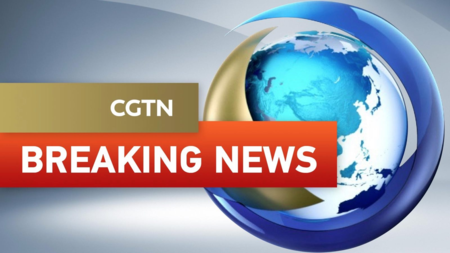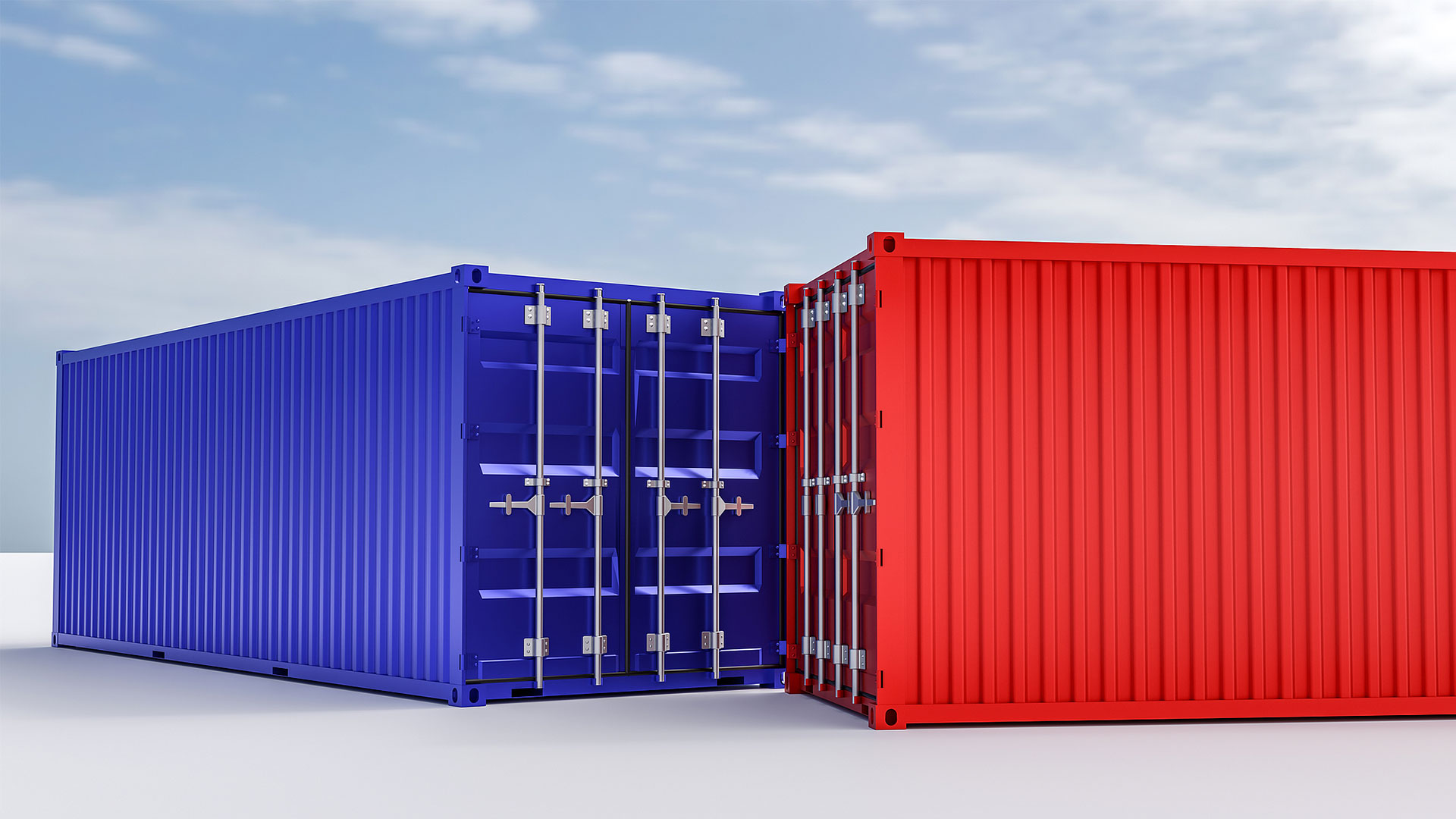By continuing to browse our site you agree to our use of cookies, revised Privacy Policy and Terms of Use. You can change your cookie settings through your browser.
I agree
Search Trends
CHOOSE YOUR LANGUAGE
- Albanian Shqip
- Arabic العربية
- Belarusian Беларуская
- Bengali বাংলা
- Bulgarian Български
- Cambodian ខ្មែរ
- Croatian Hrvatski
- Czech Český
- English English
- Esperanto Esperanto
- Filipino Filipino
- French Français
- German Deutsch
- Greek Ελληνικά
- Hausa Hausa
- Hebrew עברית
- Hungarian Magyar
- Hindi हिन्दी
- Indonesian Bahasa Indonesia
- Italian Italiano
- Japanese 日本語
- Korean 한국어
- Lao ລາວ
- Malay Bahasa Melayu
- Mongolian Монгол
- Myanmar မြန်မာဘာသာ
- Nepali नेपाली
- Persian فارسی
- Polish Polski
- Portuguese Português
- Pashto پښتو
- Romanian Română
- Russian Русский
- Serbian Српски
- Sinhalese සිංහල
- Spanish Español
- Swahili Kiswahili
- Tamil தமிழ்
- Thai ไทย
- Turkish Türkçe
- Ukrainian Українська
- Urdu اردو
- Vietnamese Tiếng Việt
Copyright © 2024 CGTN.
京ICP备20000184号
CHOOSE YOUR LANGUAGE
- Albanian Shqip
- Arabic العربية
- Belarusian Беларуская
- Bengali বাংলা
- Bulgarian Български
- Cambodian ខ្មែរ
- Croatian Hrvatski
- Czech Český
- English English
- Esperanto Esperanto
- Filipino Filipino
- French Français
- German Deutsch
- Greek Ελληνικά
- Hausa Hausa
- Hebrew עברית
- Hungarian Magyar
- Hindi हिन्दी
- Indonesian Bahasa Indonesia
- Italian Italiano
- Japanese 日本語
- Korean 한국어
- Lao ລາວ
- Malay Bahasa Melayu
- Mongolian Монгол
- Myanmar မြန်မာဘာသာ
- Nepali नेपाली
- Persian فارسی
- Polish Polski
- Portuguese Português
- Pashto پښتو
- Romanian Română
- Russian Русский
- Serbian Српски
- Sinhalese සිංහල
- Spanish Español
- Swahili Kiswahili
- Tamil தமிழ்
- Thai ไทย
- Turkish Türkçe
- Ukrainian Українська
- Urdu اردو
- Vietnamese Tiếng Việt
Copyright © 2024 CGTN.
京ICP备20000184号
互联网新闻信息许可证10120180008
Disinformation report hotline: 010-85061466



















U.S. President Donald Trump displays his signature on an executive order on reciprocal tariffs in the Oval Office of the White House in Washington, D.C., U.S., February 13, 2025. /VCG
As U.S. President Donald Trump escalates his tariff threats, all eyes are on April 2, his proclaimed "Liberation Day," when he vows to implement reciprocal tariffs matching those imposed by other countries on American goods.
Given the on-again-off-again nature of Trump's tariff announcements and recent conflicting signals from Trump administration officials, the final form of these reciprocal tariffs remains unclear.
Such policy unpredictability has nevertheless fueled growing concerns about triggering both a possible U.S. recession and a disruption in the global trade system.
What are reciprocal tariffs?
Trump announced on Sunday that his upcoming reciprocal tariffs would apply universally to all U.S. trading partners, directly countering his economics adviser Kevin Hassett's stated focus on only 10 to 15 countries with the worst trade imbalances.
On January 20, 2025, within hours after his inauguration, Trump issued the "America First Trade Policy" executive order, directing federal agencies to complete a full review of U.S. trade policy and submit recommendations by April 1. Last week, he delayed them until April 2, quipping that he didn't want his landmark trade policy mistaken for an April Fools' joke.
On February 13, Trump signed another executive order directing the Commerce Department, Treasury Department, and Office of the U.S. Trade Representative to determine "the equivalent of a reciprocal tariff with respect to each foreign trading partner."
"I have decided, for purposes of fairness, that I will charge a reciprocal tariff, meaning whatever countries charge the United States of America, we will charge them no more, no less. In other words, they charge us a tax or tariff, and we charge them the exact same tax or tariff. Very simple," Trump said at the White House back then.
While reciprocal tariffs seem straightforward in theory – matching another country's duties on U.S. goods – execution is complex, as countries typically apply varying tariff rates across different product categories using hybrid calculation methods.
According to one estimate, the reciprocal tariff policy would require tariff rate calculations for approximately 5,000 product categories spanning 186 countries and regions, involving up to 930,000 discrete tariff assessments.
As of March 31, it is unclear how the Trump administration will calculate reciprocal tariffs and to what extent these tariff rates will factor in non-tariff barriers or value-added taxes, said the American Action Forum (AAF), a Washington D.C.-based policy institute.
Reciprocal tariffs can be implemented in several ways, primarily through country-level reciprocity, applying uniform rates to all imports from a given nation, or product-level reciprocity, customizing rates according to specific commodity categories, according to the AAF.
Will the move cause the U.S. to go into recession?
If enacted, reciprocal tariffs would impose significant costs on U.S. consumers and businesses, while concerns are mounting that the tariffs could slow growth or even trigger a recession in the world's largest economy.
Assuming the Trump administration utilizes a country-by-country approach with a weighted average tariff rate applying to harmonized tariff schedule sectors, reciprocal tariffs will cost U.S. consumers and firms between $26.3 – 34.5 billion in the first year, and factoring in value-added taxes would increase costs by an additional $214.4 billion, said the AAF.
In a Sunday assessment, Goldman Sachs raised its 12-month U.S. recession probability forecast to 35 percent, a 15-percentage-point increase from its prior estimate.
The investment bank warned that aggressive U.S. tariff policies could drive up inflation and unemployment rates, stifle economic growth, and heighten recession risks.
In its second tariff forecast revision in less than a month, Goldman Sachs now projects the average U.S. tariff rate will increase by 15 percentage points in 2025, five points above its previous estimate. The bank anticipates Trump will announce reciprocal tariffs averaging 15 percent across all U.S. trading partners on April 2.
It also lowered the U.S. GDP growth forecast for 2025 to 1.5 percent from 2.0 percent.
Is April 2 ground zero for a global trade war?
Economists and trade analysts continue sounding alarms about the Trump administration's proposed tariffs, warning that they are grave misunderstandings of how the global economy works and could inflict lasting damage on the global trade system.
The U.S. average tariff rate on all imports will surge from 2.5 percent in 2024 to 8.4 percent in 2025, reaching a post-WWII high not seen since 1946, according to projections on March 25 by the Tax Foundation, a U.S. research center that focuses on tax policies.
The fundamental aim of Trump's trade policy is to unravel global supply chains, which would severely disrupt global businesses, including the U.S. ones, said Tu Xinquan, director of the China Institute for WTO Studies at the University of International Business and Economics in Beijing.
The U.S. president is convinced that America loses under the current global system and calculates that a hike in import prices driven by higher tariffs will push consumers and businesses to "buy American," with the end goal of reviving U.S. manufacturing, Tu told China Media Group last week.
Yet today's supply chains are deeply interconnected ecosystems, and Trump's forced decoupling would send shockwaves through global industries, hitting U.S. firms as hard as foreign ones, he said.
Alarming parallels emerge between the current U.S. trade policies and an earlier tariff hike episode in U.S. history: the Tariff Act of 1930, according to Stephen Roach, a senior fellow of the Paul Tsai China Center at Yale Law School and former chairman of Morgan Stanley Asia.
Under a law known as the Smoot-Hawley Tariff Act, the U.S. raised duties on over 20,000 imported goods to record levels, triggering widespread retaliatory measures from trade partners, causing both U.S. imports and exports to plummet by more than 50 percent.
After its enactment, global trade shrank by over 60 percent, exacerbating the Great Depression in the United States and inflicting severe economic damage worldwide, Roach told a subforum on globalization at the 2025 Boao Forum for Asia Annual Conference last week.
Will April 2 mark Trump's promised "Liberation Day" or become ground zero for another global trade war? Roach asked.